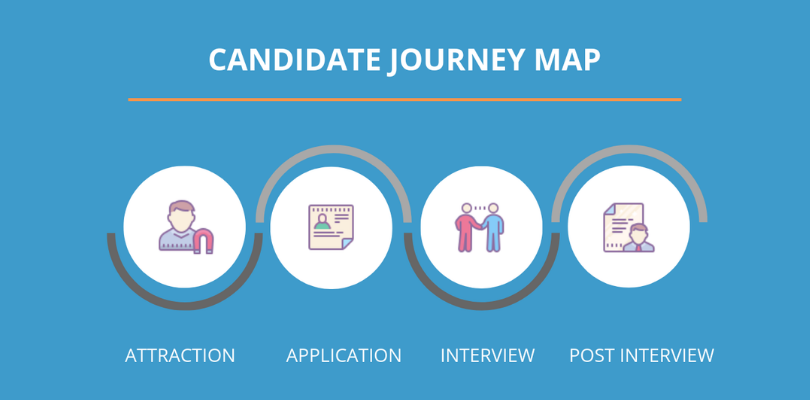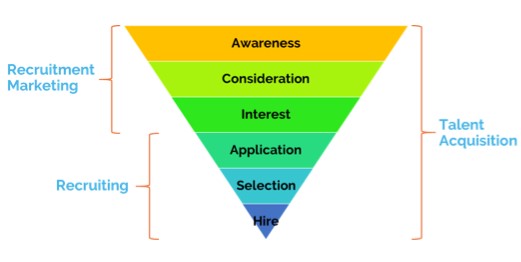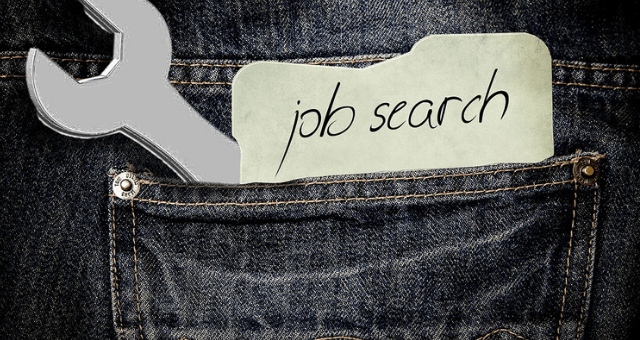
Candidate Journey: what it is, the stages and how to make a cognitive map
Just as before buying any product or service, you read reviews by those who have already tried it, you get lost in its characteristics to know every detail about how it works or you search on various sites to see if there are offers and promotions, in the same way a candidate, before applying for a particular job, takes time to understand if it really suits him. That is, he begins what is called the Candidate Journey.
What is the Candidate Journey?
Translating literally from English, the Candidate Journey is nothing other than the candidate’s progress, just as the customer journey is the buyer’s journey towards a purchase.
A real journey made up of fixed stages and (many) variables that leads them, not always immediately, to click on a job ad on the company website, on a job board or on social networks such as LinkedIn.
Understanding how this journey works, how a real Candidate Experience develops, allows not only to answer the classic question “How did it get (how can it get) to us?”, but to improve the entire selection process and attract the best candidates.
And this becomes crucial in a market that is very candidate-centric and in which, as we know, it is increasingly difficult, given the many possibilities, to convince job seekers to go beyond the job application channel and begin the process that will lead them to a possible first interview and all the subsequent stages of the selection process.
Why is the Candidate Journey important
This question could be answered in many ways. First of all, it has to be said that about 60% of candidates, well over half, have a negative Candidate Experience and this is undoubtedly due to the fact that, after internally planning to open a position, we “put it out there” without doing an accurate reflection on who is on the other side.
How will our vacancy be displayed? How will the candidate learn about it? What will he or she do once they see it? What aspects of our job posting will he or she focus on? What information will they look for about the company? How will they look for it? What reputation does the company currently enjoy?
These are all questions a recruiter should ask themselves before posting any ad, thinking about the network of online and offline interactions that exist between candidates and the company. Paying attention also to what in the world of sales, are called the “touchpoints”, that is, where the company or the recruitment company and the candidate meet and how this meeting takes place.
These are all moments in which the company has the opportunity to start building a relationship and at the same time to increase people’s trust and affection for the brand.
Being aware of this, however, means that we are only at the beginning of the work because it is not certain that every interaction, every point of contact goes as we think it should.
Often the opposite can happen. In an article published by Forbes last September, we read that for every position that is opened there is a net potential for negative experiences that can lead in turn to negative reviews and consequently to build an equally negative corporate reputation. That’s why while you’re focused on finding the person you’re looking for, filling the vacant position, and doing so in a short amount of time (thus thinking you’ve achieved the best possible result), you must at the same time think about everything in the selection process that couldn’t go right, what’s going on with all the other possible candidates, and with those who applied but didn’t live up to expectations.
Many studies emphasize the remarkable importance of treating every person who comes into contact with your company as unique, whether it’s an employee, a candidate, or a client, and doing so with as much humanity and care as possible. The benefits of this modus operandi will be considerable and will fall on the whole recruiting process and at the same time you will also reduce the risks related to negative word of mouth, which is very very difficult to control.
How much does a negative Candidate Experience weigh
Forbes again gives us some important information about the negative Candidate Experience. The U.S. magazine has collected several opinions from readers and it came out an interesting and at the same time quite alarming picture.
Some say they spent a lot of time customizing the CV, writing the cover letter, but at the same time took more than an hour to submit their application because the procedure was too slow or unclear.
It goes without saying that the more streamlined and immediate the process, the fewer steps it requires, and the more engaged and satisfied the candidate feels once they have completed it. Stressing out during the various steps can cause them to start over or, worse, abandon the whole thing.
A negative Candidate Experience also goes through the later stages: there are those who complain that they scheduled a phone interview and it not only didn’t happen at the scheduled day and time, but when it was rescheduled 2 more times, just as many blew up. The prospect adds that not only will he no longer consider the company but that he will also do a negative review on Glassdoor.
In light of all of this, here’s why it’s critical for a recruiter to have a clear vision of the brand before starting a search and selection process as well as it’s critical to know that you need to monitor the feedback that is given on the various sites and above all respond by trying to justify why you took a certain action.
Managing a crisis is always better than not considering it at all: it can erupt at the least opportune moment.
The 4 phases of the Candidate Journey
Let’s make it clear right away that, from a Talent Acquisition perspective, a complete funnel in which the candidate makes contact with the company usually consists of 6 phases: Awarness, Consideration, Interest, Application, Selection and Hire. All six phases make up the complete Talent Acquisition process; of these, the first three processes (awarness, consideration and interest) are more properly belonging to a sub-category that has to do with marketing, while the last three (application, selection and hire) are typical phases of the recruiting process.

However, in order to simplify this flow, we propose to create a cognitive map based on 4 phases that in this case we will call: attraction, application, interview and post interview.
Let’s be clear: there are no fixed rules guiding the creation of a candidate path. If you search online you will find many examples, probably each based on the author’s personal experience, that propose different itineraries. The advice is therefore to start from a very simple map of the candidate and then gradually and according to your personal experience, add or reduce the flows of company-candidate interaction.

Attraction
This is the first, or very first, phase, which is itself made up of several contact points. It is the moment in which the would-be candidate becomes aware of your company – unless he or she already knows it -, what it does and, above all, what it means to work there.
It is a primordial phase and can occur when they are looking for a position through a job board and arrive at your company’s job board or through the search engine they arrive at your career page. Or maybe he meets an employee and they tell him what they do for a living and for whom, playing the spontaneous role of brand ambassador.
The prospective candidate can also arrive via social networks. Awareness is followed by consideration: candidates “determine” whether or not they are interested in working at your company. It is useful at this stage to think about additional touchpoints, such as job fairs, live meetings, etc. It is not certain that the candidate at this stage decides to make an application right away, maybe he wants to be even more sure and continues to search for more information.
We know: the process is anything but linear, that’s why it’s important to keep the interest high, perhaps by inviting candidates to ask questions about the position your company is looking for, trying to tell more about the job with an interview with the manager of the team the person will come into contact with, or using job ads aimed at a specific target with well-defined interests and characteristics.
Application
This is the actual application phase: the checks have been done, the interest is there, now all that remains is to apply. This phase therefore begins with the worker filling out a form, responding to the ad on the site, sending an email, using LinkedIn easy apply, etc., and ends when he/she is either rejected or immediately after the interview.
It is essential to take care of communication: this is the moment in which the candidate has placed his trust in your company, he has a positive perception but it takes little for him to change his mind. Therefore, as a recruiter you have to pay attention to your answers – and give them! – and how you write them. It’s a phase in which, even if you don’t accept that application, you show that your company really cares about people. So giving feedback, thanking for receiving the application, giving news about the selection process (will it be a single or group interview, how many interviews are planned) is very important for your Corporate Reputation.
Interview
Once the CV has been screened, it is time for the interview, also known as a job interview. That can be telephone, video, live, on Skype. It can also be a first phone chat followed by an interview, perhaps with a group assestment, what matters is that the recruiter always puts himself in the shoes of the candidate.
This phase is often neglected. Instead, it is important to ensure that the Candidate Experience is positive. How? Welcoming the candidate in the best possible way, avoiding standing still, explaining any delays and explaining the process of selection: whether there will be other interviews after this one, which company figures will be involved, how many people have applied, how much time can pass before the recruiter is able to give a positive or negative answer.
Post interview
Managing the interview in the best possible way helps in the post-interview phase, i.e. the phase that follows the actual interview, the last phase of the Candidate Journey, which can end either by scheduling another meeting, or by hiring or excluding the candidate from the selection process.
This is a very delicate phase in which the candidate cannot do anything but wait, so the best thing to do is to maintain a dialogue with the candidate, making him/her perceive the company’s positive and professional attitude. Send him an email to thank him, explain the timing (even if you said it verbally, repetita iuvant) or you can send him material about the company or the next initiatives. And when the decision is made, it’s critical to let the candidate know how the selection went. Obvious when he is hired, which is totally overlooked when there is a rejection.
If you can also let them know the reason for the rejection, without going into too much detail, it will be an opportunity for the candidate to grow and for you to increase Brand Reputation.
Finally, the post-interview phase could include – in case of hiring – the onboarding process, i.e. the insertion of the new hire into the company. This phase is also very important because it immediately gives the newly hired employee a first impression of how the company is organized, its values, corporate culture, etc.
How to create a cognitive map of the Candidate Journey
Creating a cognitive map of the various stages of the Candidate Journey allows you not to miss any of these steps, to analyze each touchpoint and in doing so to improve the entire recruiting process and evaluate point by point how the candidate can react, what path they can take, what direction they can choose.
How to do it? The advice is to try it firsthand as if it were you applying, thinking about the various touchpoints and checking them directly. As you can see in the example below, which is the result of a workshop held by In-recruiting, for each of the 4 phases a value range (from -5 to 5) has been created that every recruiter can use to evaluate the various contact points between his company and the candidate.
By inserting in each phase of the Candidate Journey the contact points that the candidate has with his company (in the map there are some examples for each phase) and assigning a value to each touchpoint, it is possible to create a customized Candidate Journey based on your company experience. In this way, not only will you be able to reflect on what the possible touchpoints are, understand how and if they work, and possibly add others, but you’ll have a clear and immediate view of the entire journey the candidate takes when they come to apply for your company up to the moment they eventually get on board.
How do you assess the stages and their respective touchpoints? In addition to experimenting yourself by registering on the Career Site, interacting with social pages (reading comments or possibly asking questions, taking surveys, etc.) or if you already use an ATS (Applicant Tracking System) like In-recruiting, you can also interview the candidates themselves during the selection process and gather valuable data. Therefore, having feedback on the selection process, timing, communication and ultimately how the candidate views the company is a key practice for evaluating your strategic actions throughout the Recruiting process and thus improving your company’s Employer Branding.
Want to put yourself to the test? Try our hands-on Candidate Journey Map exercise and evaluate how your selection process is going.
Enhance the Candidate Experience with an ATS
In all this, a huge contribution in all phases of the Candidate Journey can come from the use of an ATS software like In-recruiting.
Thanks to the software you can, for example, write a better Job Description so that it is clear to everyone what you are looking for, pre-set a thank you message to be sent to all the people who applied, speed up the selection process, give feedback on the progress of the recruitment process, better plan all the Job Interviews, make a video interview, improve the onboarding phase and much more.
This, together with the Candidate Journey Map, will help you not only to identify the best talent for that particular position, but to strengthen your Brand Reputation. A company that is transparent in the recruiting process, giving attention to all candidates is definitely a company with a good reputation.
Improve Employer Branding with an Effective Candidate Experience
An effective Candidate Experience that leads to an equally effective Candidate Journey, as we have already said, is fundamental in terms of brand reputation, but not only.
It becomes an important part of the employer branding strategy, i.e. the attractiveness of the company as a potential employer.
For a candidate, choosing one company over another is no longer just a matter of higher salaries or a particularly cutting-edge workplace, but it is the experience he or she has before joining, and how he or she feels throughout the process, that counts.
Therefore, if possible, the recruiter must avoid treating the candidate as just a test, but to earn his respect, he must almost engage with him.
Companies that work a lot on Employer Branding do it, they play a lot on the good impression: they take candidates for a coffee, they write emails during the waiting period, they use social networks in view of Social Recruiting but also to converse with them, make them feel appreciated, considered.
But that’s not all: recruiters become almost marketers of their own company. The moment of the first meeting is in fact a unique opportunity also for this: in Intel for example they give 20 minutes of the interview to all the questions that a candidate wants to ask about the company.
“We want the candidates themselves to select the people who do the hiring,” they say, and this shows that improving every step of the Candidate Journey is not only incumbent on them to choose the best talent, but to make people really want to work at that company and not just aim to get that job.
A person who chooses to apply for a position must also choose the company in which they will do so.
Because the tasks, over the years, can also change, it may happen that in times of great pressure you have to cover two or more roles at the same time but if the worker has chosen the company, if he has somehow fallen in love with it, that will be the best way to create a lasting relationship and consequently attract other candidates.
Want to learn more about the potential of ATS software like In-recruiting? Try it for free.

Giornalista, content strategist e formatrice
Siciliana trapiantata a Milano, città che ama molto come la sua terra. Giornalista, SEO copywriter, formatrice e amante del live tweeting, scrive per varie testate e blog aziendali di lavoro, risorse umane e tanto altro.
Ha scritto nel 2020 il suo primo libro “Scrivere per informare” insieme a Riccardo Esposito, edito da Flacowski e nel 2021 altri due: “L’impresa come media” e “Content marketing per eventi“.
Ama il mare, la bici, la pizza, i libri, le chiacchiere all’aperto.